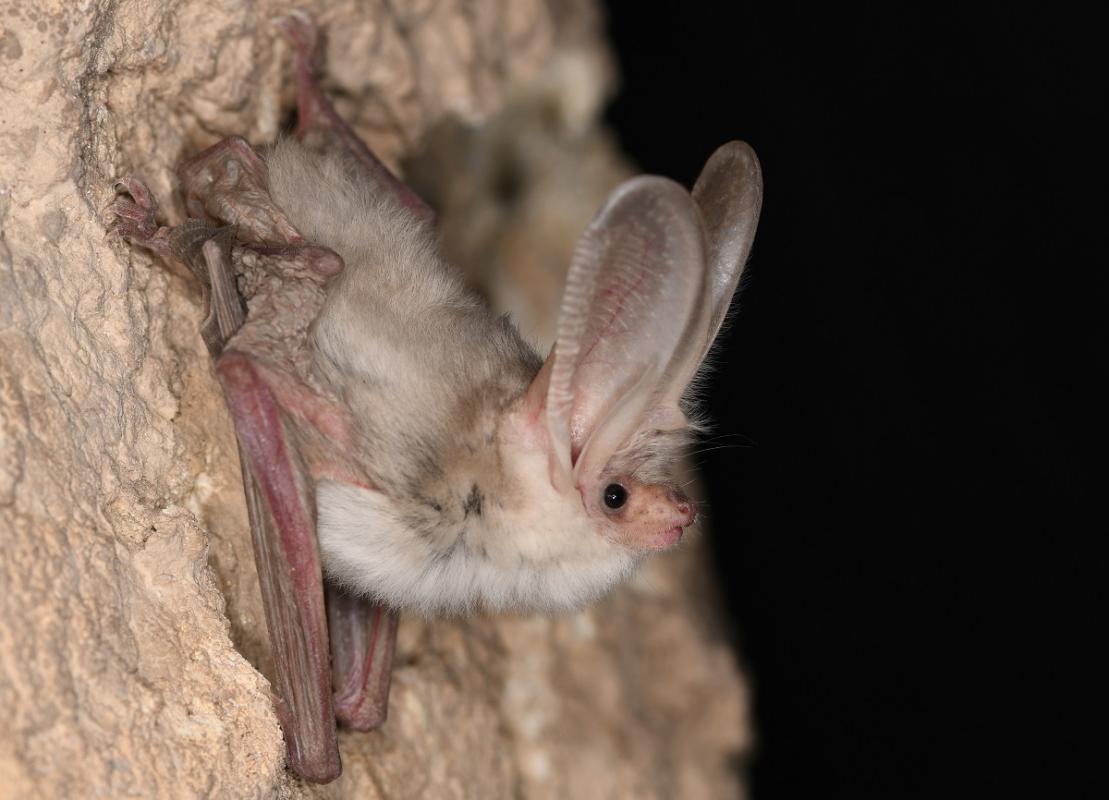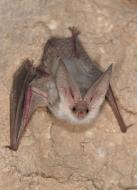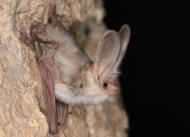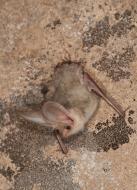An international team of researchers from Germany, Uzbekistan and Turkmenistan, led by the Museum für Naturkunde Berlin, has rediscovered a bat species that had been missing for 55 years. Pictures and video recordings could be made for the first time. The aim now is to conduct comprehensive research on the evolution and ecology of Central Asian bat fauna. The Turkmen government is using the rediscovery of the Turkestan long-eared bat as an opportunity to plan a large, protected area that will benefit many other animal and plant species.
The Turkestan long-eared bat (Plecotus turkmenicus), known so far only from a few specimens in Russian museums, was last observed in 1970. Until now, there have been no photographs or reliable descriptions of living animals. During a systematic review of Turkmenistan's bat fauna to update the Red List, the species was given top priority due to the limited knowledge available. As an endemic species of the Karakum Desert in the border regions of Turkmenistan, Kazakhstan and Uzbekistan, there was concern that it was very rare or even extinct.
In October of this year, the bat became the target of an international research expedition. The expedition visited historical observation sites and other suitable locations in the Karakum Desert. First, a young female Turkestan long-eared bat was found in a demolition crevice. In addition, an adult male was sighted in a loess cave 87 kilometres away close to the border of Uzbekistan. After decades, the existence of the species was thus confirmed. For the first time, audio, image and video material of this desert bat was recorded and samples for genetic testing were collected. The aim is to conduct comprehensive research into the evolutionary development of Central Asian bat fauna.
The Turkestan long-eared bat is likely endangered by climate change. Due to the progressive drying out of the deserts of Central Asia, mainly caused by rising temperatures, the natural vegetation cover is steadily declining, and the already limited habitat of the species is shrinking further. The Turkmen government is now including the rediscovery of the Turkestan long-eared bat in its plans to designate a protected area covering more than 50,000 hectares. This would benefit not only the endemic bat species, but also the entire biodiversity of the cold winter deserts, including large mammals such as wild asses and goitered gazelles.
The record near to the border could also indicate a so far unknown population of the Turkestan long-eared bats in Uzbekistan. Close cooperation between the Museum für Naturkunde Berlin, the Turkmen Ministry of the Environment, the Turkmen Administration for Protected Areas, and the Uzbek Academy of Sciences on research into Central Asian bat fauna is to be continued.
Images: Photographed alive for the first time: a Turkestan long-eared bat (Plecotus turkmenicus) that had been lost for decades, upon its rediscovery. Photos: Christian Dietz.



